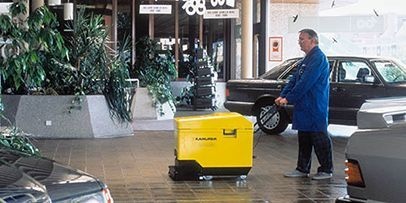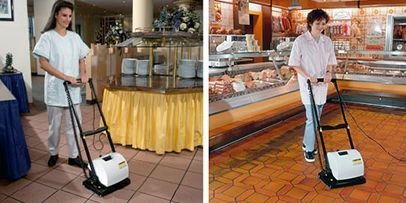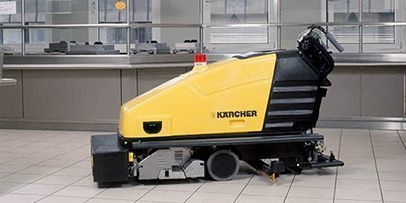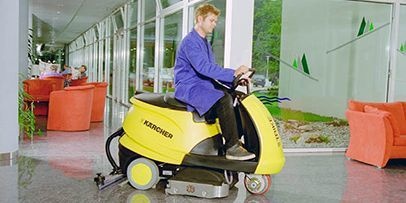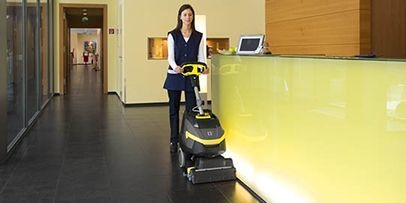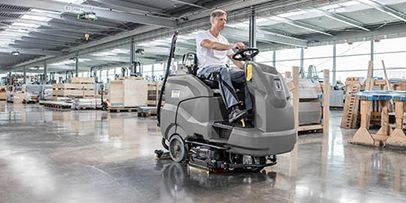The success story of the scrubber machine
The start of floor-cleaning by machines dates back more than 100 years. The first floor polisher was developed at the start of the 20th Century to take the monotony out of tedious work. The 1930s then saw the variant for wet floor cleaning, and the first scrubber machine, with integrated suction function, appeared on the market in the 1950s. Another milestone occurred in 1986 with the first walk-behind machine with roller brushes, which scrubs, vacuums and sweeps in one step, and significantly improves cleaning performance on structured floors.
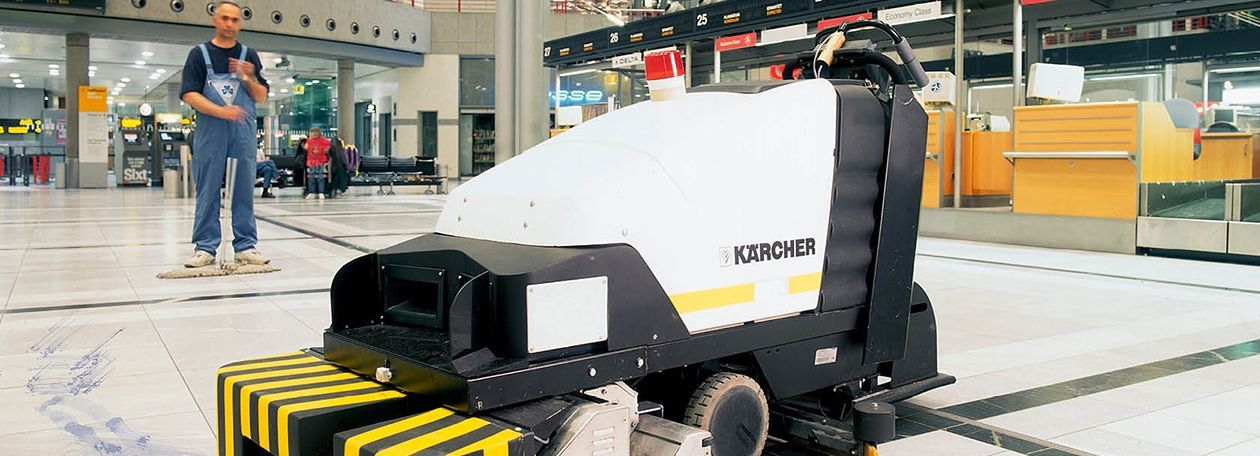
Keeping pace with customer requirements
Ever since then, the floor scrubber has been an indispensible part of the floor cleaning process. New customer requirements are constantly being incorporated into new developments: models with disc or roller technology depending on floor conditions, machines for cluttered and small areas, platform strategies for more efficiency and flexibility, eco concepts for environmental and resource conservation, as well as innovative solutions for improving ergonomic design. Now, digitalization is establishing itself with fleet and process management systems and pointing the way to the future.
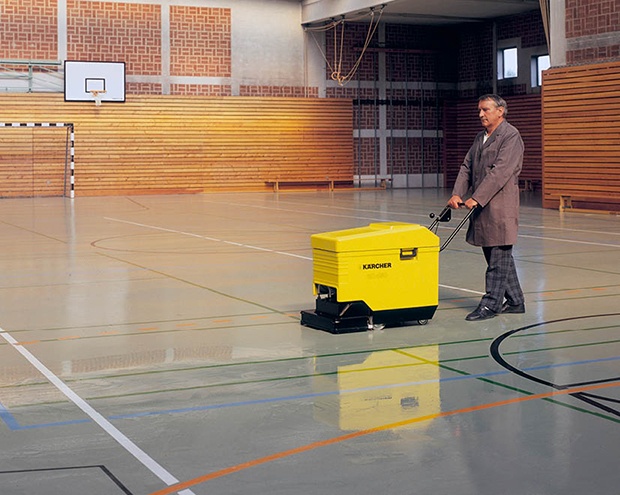
Roller or disc?
Floor scrubbers have been used to clean hard and flexible floor surfaces in indoor areas since the 1950s. The tried and proven single-disc technology guarantees good results; only rarely does the roller/brush technology have any effect. All this changed in 1986, when the cleaning specialist Kärcher brought a walk-behind machine with roller brushes onto the market. The company responded to a need that was only regional: While Asia, southern Europe and the USA often sees the installation of smooth floors, which are effectively cleaned by means of disc technology, more structured floors such as grouted tiles or natural stone with rougher surfaces are found in northern and central Europe. Regardless of the floor condition, roller brushes achieve an improved scrubbing and polishing performance and hence a more consistent result. The background: Roller brushes work with a high contact pressure, since the contact surface on the floor is less, and faster revolutions are possible than with disc brushes.
Triumph of platform strategies
The floor cleaning sector had to overcome rising costs and higher customer expectations, hence the call for a greater variant diversity along with the desire for low investment costs. Since the beginning of 2000, the platform strategy involving the idea of using as few new parts as possible and significantly reducing development and production costs, proved its worth in the development of new models. A degree of individualization, which could not be achieved efficiently and cost-effectively by introducing various individual models, is also possible. Many aspects of the latest machines can be freely configured by the user, depending on floor condition, surface and degree of soiling.
Roller or disc, batteries or cable, with or without protective cover, wide or narrow wheels – depending on the manufacturer, the list can be as multifaceted as when buying a car. Including innovative accessories, such as an automatic detergent dispenser or systems for setting up various users’ profiles for operators, service technicians and facility managers.
The environment in mind
Depending on the country and its traditions, the issue of ecology has moved up the building cleaning agenda in recent years. Kärcher has developed the eco!efficiency line for professional users, a highly eco-friendly and efficient product range. Numerous scrubber machines are equipped with this extremely efficient energy-saving mode. They operate with less fan power, reduced detergent usage and fewer brush revolutions – and hence longer, quieter and more energy-saving. Up to 50 percent energy and water can be saved at the touch of a button with impressive cleaning results.
Wherever you are headed – automation & co.
Although Kärcher developed a cleaning robot and tested it at various airports back in 1996, the widespread use of partially or even fully-automated solutions still sounds like a pipe dream. Indeed, machines are already available on the market, but most of them are designed for and economically viable only in large-scale areas. Digitalization and automation offer new potentials for floor cleaning too, but always geared towards a clear added-value for the user. If safety and economic efficiency can be fully combined in the cleaning robot sector, and small cluttered areas can also be realized, we may well see a trend for scrubber machines for the next hundred years.
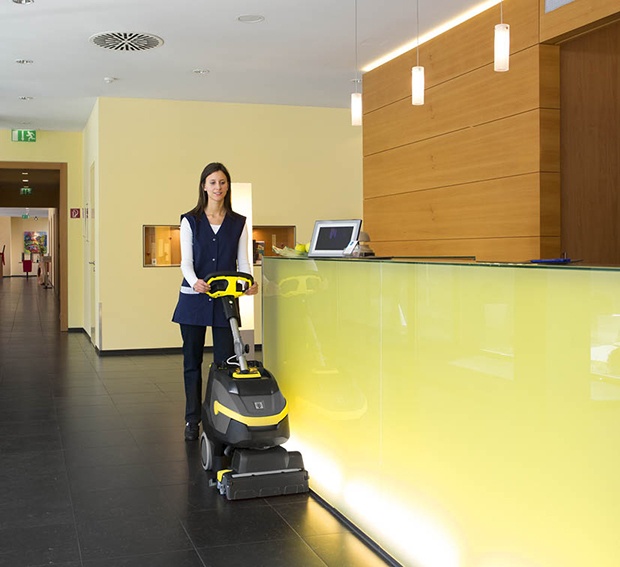
You may also be interested in:

World of experience with a dreamlike setting
In the Hans-Peter Porsche TraumWerk model railway and toy museum an entire armada of professional cleaning machines, which are in daily use – and operated exclusively by internal staff – make sure all exhibits are clean and highly polished.

